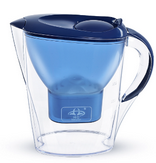SAN
Thermoplastics > Styrenics

SAN - styrene and acrylonitrile copolymer | ||||||||
Products range (XSTIR) | ||||||||
At Mexpolimeros we offer a wide range of SAN resin and its compounds developed according to your needs, guaranteeing quality in products and service. Our range of products includes grades without reinforcement, with fiberglass and / or with mineral load (Ibridos), loaded with metals, with special additives such as heat stabilizer, UV, metals, antistatic, antibacterial, laser marking, nucleate etc, lubricant Special and flame retardant (with or without halogens). We are also developed and evaluated by highly qualified personnel with advanced technology. |  | |||||||
SAN - styrene and acrylonitrile copolymer | ||||||||
What is San plastic? The SAN is a copolymer of styrene and acrylonitrile belonging to the family of plastics, more specifically, to styrene polymers (of which the best known is polystyrene). Worldwide, SAN production represents only 1% of the styrene market, led by polystyrene (50%), SBR rubber (15%) and ABS (11%). Styrene acrylonitrile is a polymer of the styrenic family (together with acrylonitrile butadiene styrene and polystyrene), that is, it is based on styrene. It is a thermoplastic polymer formed by repetitive units of styrene and acrylonitrile. It is designated as SAN (for its acronym in English, Styrene Acrylonitrile). Styrene Acrylonitrile can be mixed with other polymers, such as PC or Thermoplastic Polyurethane. A "copolymer" is a polymer formed by two distinct structural units (monomers): in this case, styrene and acrylonitrile. SAN resin copolymer generally contains 70-80% styrene and 20-30% acrylonitrile. It is a simple random copolymer. This combination of monomers provides greater strength, stiffness and chemical resistance than polystyrene, but it is quite clear, since the crystalline polystyrene and its appearance tend to fade more quickly. The general structure is shown in the figure. |  | |||||||
Symbols | Formula | |||||||
| ||||||||
Advantages | Disadvantages | |||||||
|
Properties
| |||||||
| SAN Physical and mechanical properties | ||||||||
Acrylonitrile provides rigidity, brightness, good chemical and thermal resistance; while the Styrene gives it ease of processing. This combination of properties makes styrene acrylonitrile an engineered plastic; For this reason, it is used in special applications. Styrene-acrylonitrile copolymers are generally transparent, with a rather amorphous structure that is easy to process. Any type of mechanical treatment can be used in its manufacture. Its impact properties, as well as those of tension and flexion, are quite better than those of other styrenes, thanks to the contributions of the properties of acrylonitrile in the mixture. The low shrinkage and the excellent fluidity in the mold allow to realize molds with a good dimensional precision. SAN polymer can offer good transparency. | ||||||||
| SAN Combustion test | ||||||||
| When we perform combustion tests on the copolymers of styrene and acrylonitrile, we see a behavior that causes quite a few ashes arranged in flakes, being yellow in color as the flame is concerned. The characteristic odor of the burning polymer SAN is characteristic of styrene smell, together with hydrochloric acid. | ||||||||
| SAN Electrical properties | ||||||||
| Being a slightly polar material, with a high TG and low water absorption, the electrical properties are practically not affected by the variation of temperature, frequency (up to 106 Hz) and humidity, within normal working intervals. | ||||||||
| SAN Optical properties | ||||||||
| The SAN is very transparent and has a beautiful shiny finish. The additional scratch resistance makes it a suitable choice for displays at the point of sale and cosmetic items. | ||||||||
| SAN Chemical resistance | ||||||||
| Generally good although it depends on the grade of the resin, the chemical concentration, temperature and efforts on the parts. It is resistant to oils, fats, formaldehyde, gasolines and hydrochloric acid. Furthermore, it is not attacked by water chemically speaking. | ||||||||
| SAN Processability | ||||||||
SAN pellets can be easily molded by means of injection, extrusion or molding or using the rotation system. The high impact is more difficult because having a higher rubber content makes them more viscous. Their characteristics are similar to those of non-ferrous metals, they can be drilled, milled, turned, sawed and die cut | ||||||||
| SAN polymerization | ||||||||
The SAN granules are obtained by mixing styrene and acrylonitrile in a reactor, using as catalyst benzoyl peroxide and heated to a temperature of approximately 60 ° C. The reaction has an azeotropic point for a composition of 76% w / w of styrene, for this reason the synthesis is carried out in the composition of said point. Polymerization can be obtained by two processes: suspension or emulsion. Suspension polymerization The polymerization is carried out in water. The monomer and the polymer obtained are insoluble in water, so that a suspension is obtained. To prevent the polymer from agglomerating in the reactor, a small amount of polyvinyl alcohol is dissolved in the water, which covers the surface of the polymer droplets and prevents them from sticking. Emulsion polymerization The reaction also occurs in water, but instead of adding a suspending agent such as polyvinyl alcohol, an emulsifier that can be a detergent or soap is added. The monomers form microscopic droplets that are stabilized by the soap during the entire polymerization process, and end up forming a milky-looking latex, from which the polymer is precipitated by breaking the emulsion. Subsequently the polymer is subjected to a washing process to remove the remains of the emulsifier. | ||||||||
| SAN Applications | ||||||||
The SAN can be found in a wide range of applications, either from the technical sector (manufacture of household items), the doctor (disposable dialysis equipment) and the food industry (due to its qualities it represents an excellent barrier against moisture and CO2, used as a food protector). SAN is used for household items and tableware, in cosmetic containers, sanitary and toilet articles, as well as in writing materials and office supplies, electronic lenses, automotive instrument lenses, dust covers, appliances, glasses, brush bodies of teeth, trays, industrial battery covers, marine instruments, panels, dishwasher-safe containers, lighters, disposable, brush bristles, auto calibrator covers, cosmetic cases, medical syringes, reflectors, refrigerator doors, battery boxes etc. . An important field of application is that inherent in the preparation of ABS resins: in this case the SAN is mixed with graft copolymers of polybutadiene with acrylonitrile and styrene. | ||||||||
